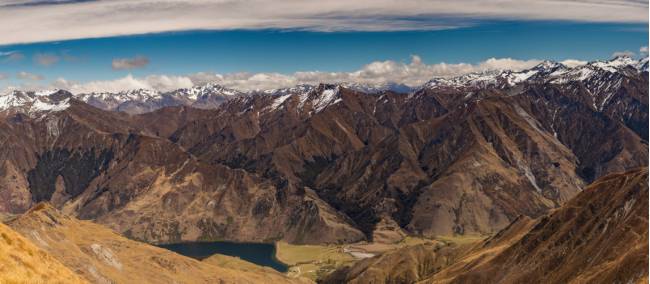
Views of the Southern Alps from Moonlight Station mear Queenstown | Colin Monteath
Blog home / Australian & NZ destinations to rival world-class icons
We all know Australia is a beautiful place. We love to tell friends and family from overseas how clean our national parks are, how our pristine coastline stretches for hundreds of kilometres, and how interesting our indigenous history is. The truth is, however, that not enough Australians have had the chance to see these wonders first-hand.
Explore closer to home and swap your international icons with these local legends.
It's the perfect opportunity to teach students more about Australia and New Zealand and to have them immersively learn and engage with the uniqueness of their local environments and their importance.
SWAP THE: Himalaya for New Zealand's Southern Alps
New Zealand’s mighty Southern Alps is where Sir Edmund Hillary, one of the first two people to climb the world’s highest peak, Mt Everest, learned his mountaineering skills. The dramatic peaks and mountain landscapes also earned it a role as a stunt double for Himalayan peaks in the movie Vertical Limit. It’s a place of world-class views and experiences and it’s virtually on our doorstep. Combine a walk here with cycling down to the plains.
The legacies of ancient Egypt are right to be experienced if you ever have the opportunity to visit, but when you don’t what can you do? Australian Rock Art is the oldest surviving human art form. Swap the hieroglyphs for petroglyphs and pictographs and learn more about this amazing wonder and more about our Indigenous population. Best opportunities for schools exist in the Northern Territory’s Top End.
Many have fallen for the elegant charm and allure of the European Alps. Simple huts in the mountain make it possible for travellers to head further away from the cities to experience alpine jewels. Highland lakes, craggy mountains and picturesque pine forests, and a lot fewer people, are what attract wilderness purists to Tasmania’s Walls of Jerusalem and Overland Track. For walkers, this is a popular region and to protect such places the National Parks restrict group sizes to 10 plus guides. For smaller groups it can still be achieved; for larger groups, there are many other enchanting Tasmanian wilderness regions to be explored.
View Tasmania trips
SWAP THE: American West for the Red Centre
The American West offers classic road trip experiences between its many iconic National Parks. However, the distances between communities aren’t as far as they are in Australia’s Northern Territory, where a drive between Alice Springs and Uluru certainly impresses upon students just how big our country is. Try a base walk around Uluru, hiking King’s Canyon, a visit to the meteorite crater, Tnorala, or learn more about a pioneering indigenous artist, Albert Namatjira. Or, best of all, re-define a true sense of our outback beauty by walking sections of the stunning Larapinta Trail.
Okay, so the Iban tribespeople and orang-utans are a massive drawcard for Malaysian Borneo, but if caves and forests are also high on the agenda then meet the Blue Mountains.
As Blue Mountains Adventure Company guide Dan Lewis so elegantly states in his blog post:
“It is this incredible dissection of deep valleys and gorges surrounding stubborn peaks that helps make the Blue Mountains the amazing World Heritage-listed place they are. The magic lies not in their heights but in their depths - the amazing places that have been carved into its sandstone soul. And there is no better way to experience the magic of these depths than to go canyoning.”
Empress Falls, Grand Canyon, Claustral, Butterbox, Whungee Wheengee. The names go on. The Blue Mountains has the world’s greatest concentration of vegetated slot canyons, formed in sandstone and in the Blue Mountains they are full of rainforest plant species.
Combine the confidence-building skills of canyoning with either a walk, abseil or basic rock climb for an adventure and personal skills packed week for students.
Visit Blue Mountains Adventure Company
SWAP THE: Muir Woods, near San Francisco, for the Tarkine, Tasmania
Old growth redwood forests are a sight to behold, but so is the chance to absorb yourself into the world's second largest temperate rainforest.
Often referred to as 'the forgotten wilderness', Tasmania's Takayna/Tarkine region in the northwest of the state is renowned for the world's cleanest air. It is a special place that is abundant in history, fascinating flora and fauna, impressive rainforest and dramatic coastlines. It is a 450,000 hectare landmass that contains 6000-plus year-old stone carvings, a natural history that dates back 100 million years to a time when Tasmania was once part of Gondwana, rainforests that provide sanctuary for at least 60 rare or endangered species and coastal plains that provide important feeding grounds for the world's rarest and fastest parrots - the orange-bellied and swift parrots.